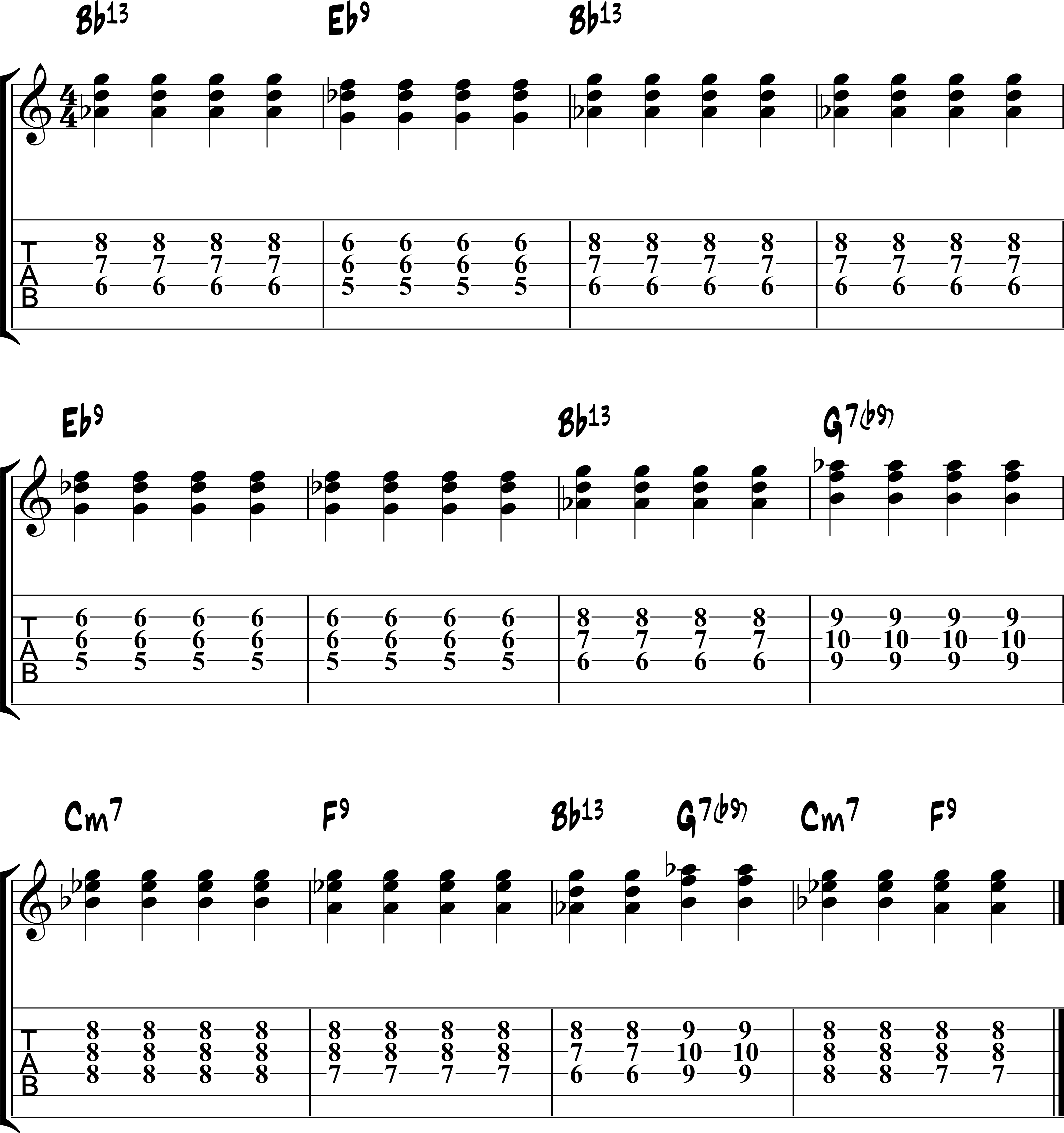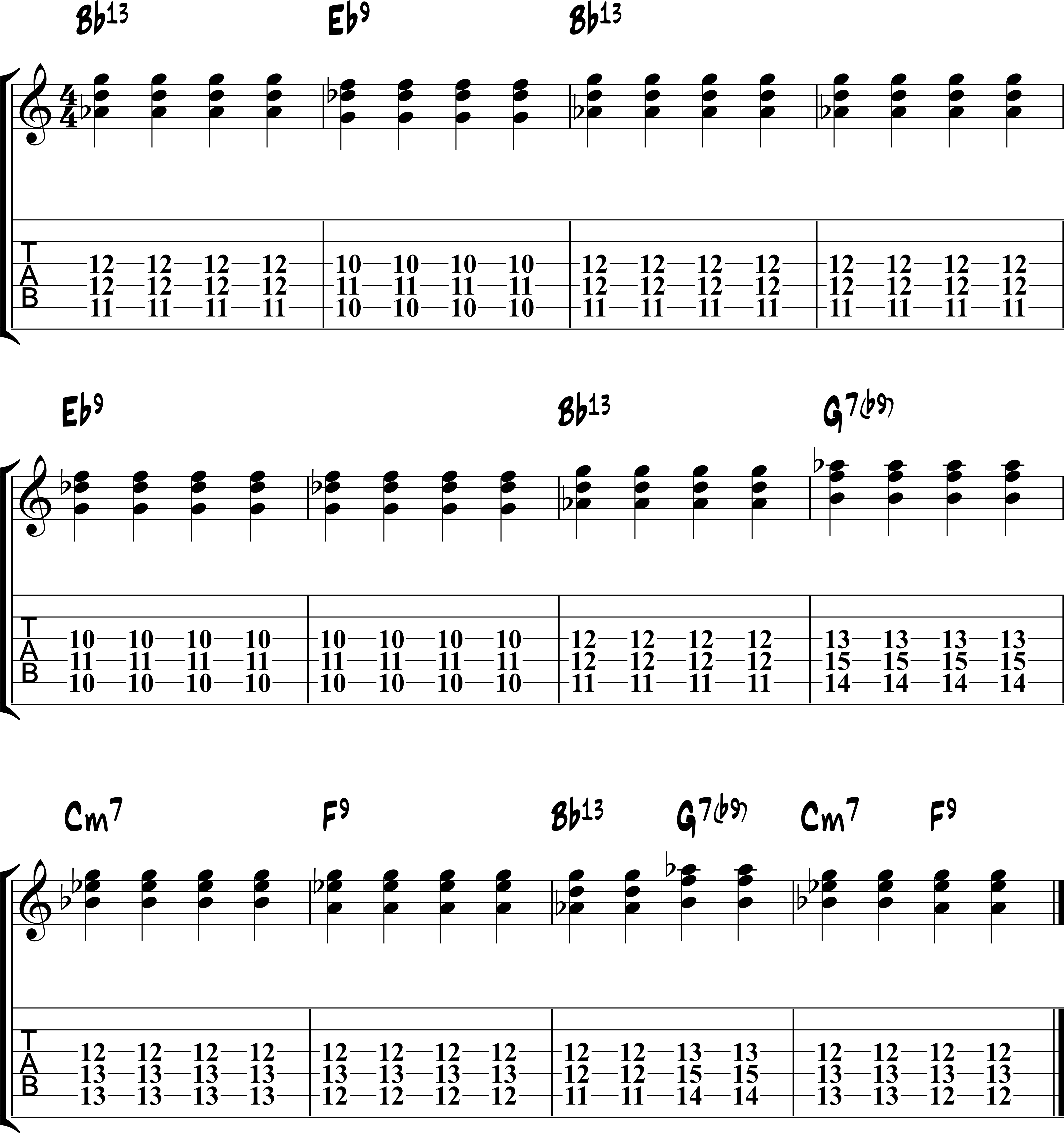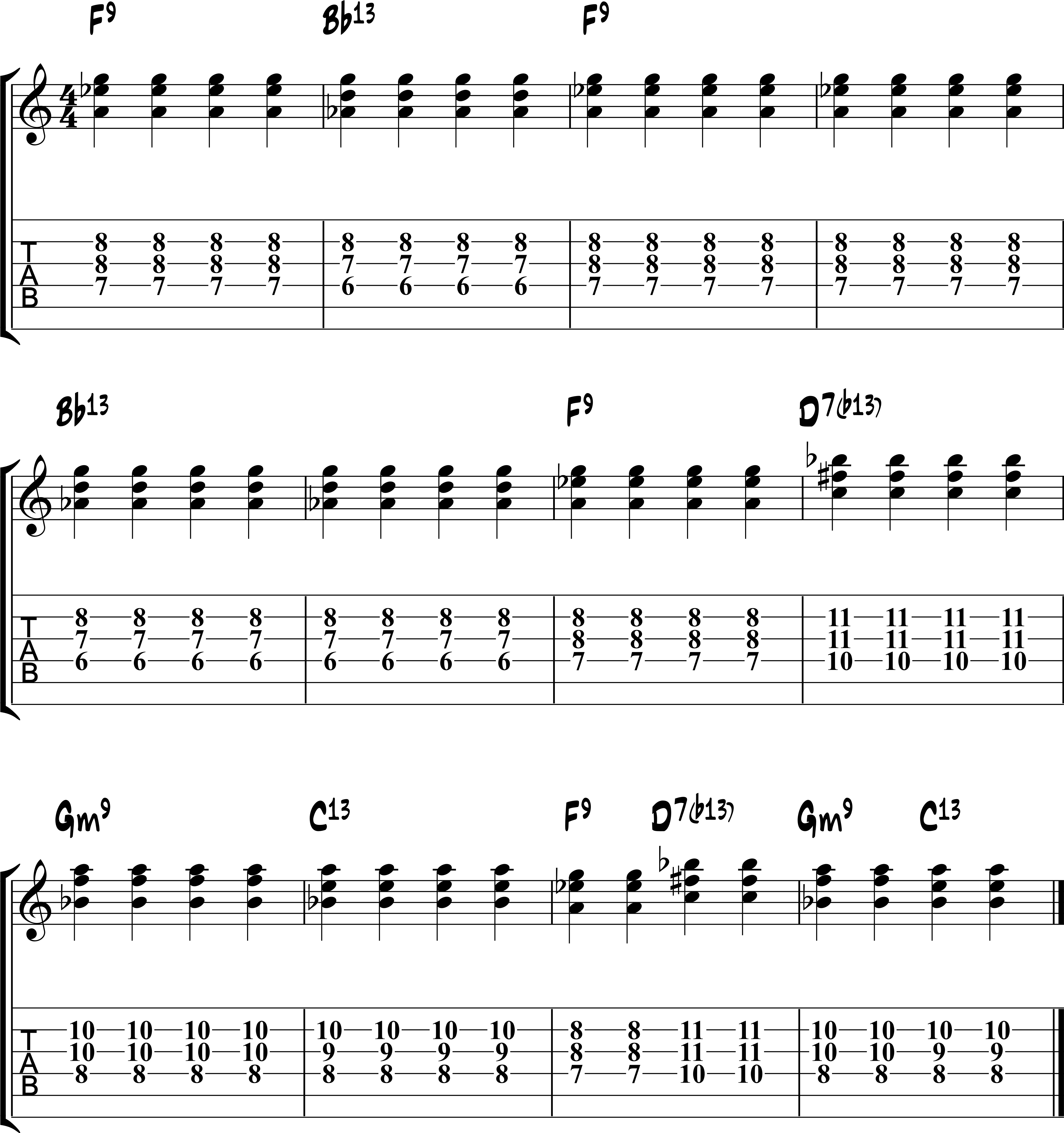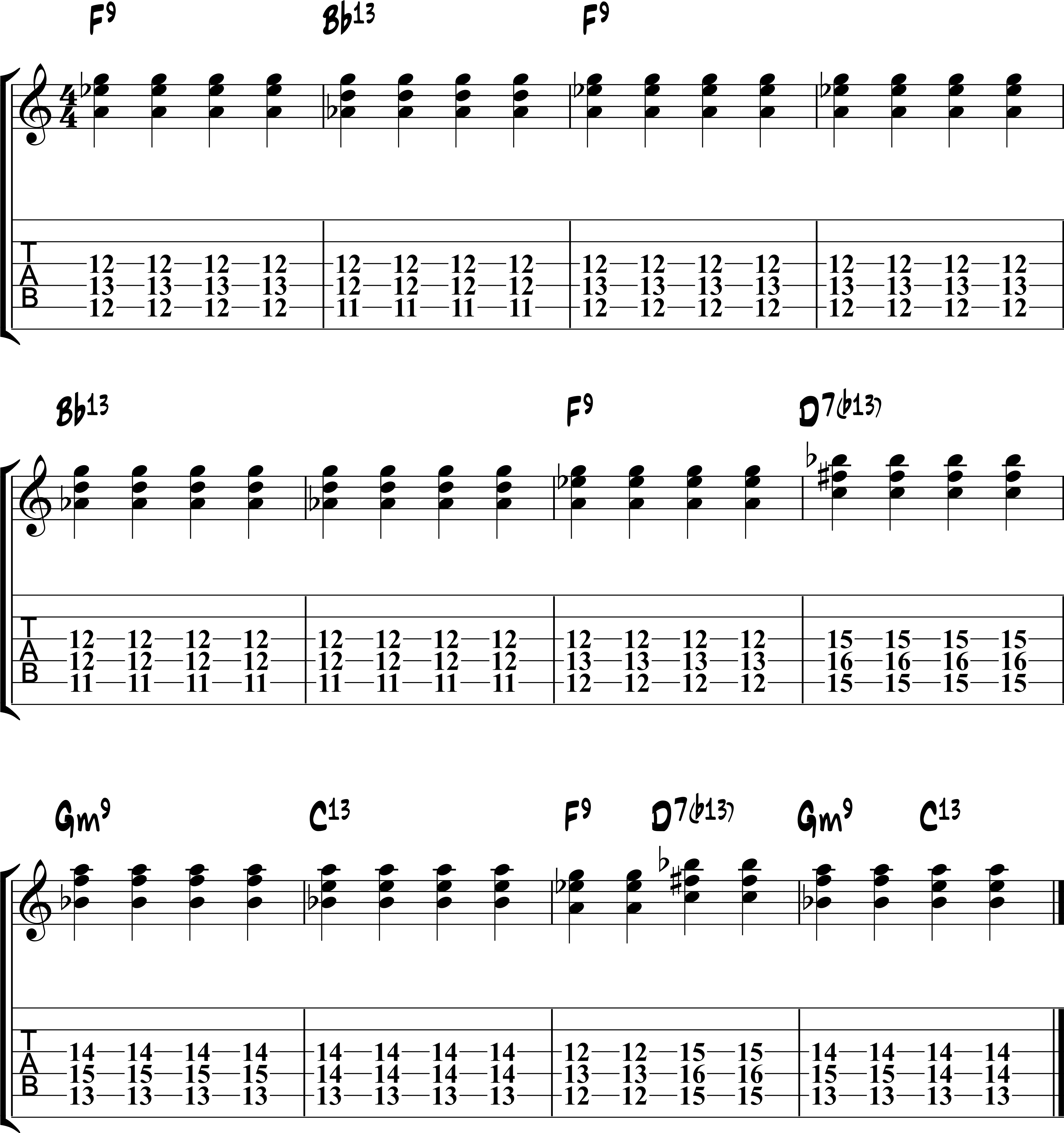4 Lenny Breau Blues Chord Studies
In this lesson, you explore Lenny Breau chord voicings, in 4 positions, over a jazz blues progression in two different keys.
These two-note shapes allow you to outline the chord changes with minimal strain on your technique.
As well, they allow you to comp with a pianist without getting in the way, and they open up possibilities for adding color notes on top of each chord.
Grab your guitar, dial in a fat, jazz tone, and have fun learning these Lenny Breau two-note jazz blues chord studies.
What Are Lenny Breau Chords?
Before you learn the 4 jazz guitar chord studies below, let’s take a minute to understand exactly what are Lenny Breau chords.
Lenny was one of the most versatile compers and chord soloists around. And…
A large part of his unique sound was the small, two and three-note chords he used in his comping.
The basis for these voicings is two intervals, the 3rd and 7th, often called the “guide tones” of any chord voicing as they “lead” your ears through the changes.
In emulating piano chords on the guitar, Lenny took the left-hand notes from pianists and used those as the foundation of his chord shapes in this style.
This gave him a unique sound and opened up harmonic space that he could explore by adding extensions on top of these two-note chords.
To bring this sound into your comping, the studies below feature guide tones plus one color-note on top of each shape, the 5th, 9th, or 13th of the underlying chord.
As you play the different chords below, notice where the 3rd and 7th are for each chord in the progression.
By recognizing these notes, you’re able to apply Lenny’s approach to other voicings, progressions, and tunes that you are working on in the practice room.
Lenny Breau Chord Study Practice Tips
Here are a few of my favorite ways to practice these chords to get the most out of your time playing them in the woodshed.
Instead of working on every item in the list below every day, print this out and choose one item to focus on in each practice session.
That way you over each practice approach without becoming overwhelmed in your playing.
Here’s the list:
- Memorize a chord study, working 1-2 bars at a time.
- Practice at a variety of tempos.
- Apply different rhythms to the chord study.
- Once you learn two studies, move between them in your comping.
- Sing the root of each chord as you comp.
- Play the color note louder than the bottom two notes of each chord.
- Slide into chords from a half-step above or a half-step below.
- Explore fingerpicking or picking variations.
- Add these chords to other jazz standards.
Study 1 – Bb Blues Shape 1
In this study, you start with the 7th-3rd-13th on the Bb7 chord and then shift to each chord in the progression with as little movement as possible from there.
Notice how the 3rds and 7ths stay as the lowest two notes of each voicing, but that they become inverted from one chord to the next.
The 7th and 3rd of Bb move to the 3rd and 7th of Eb for example.
This is an important voice-leading movement as it allows you to move from one chord to the next without jumping around the fretboard.
Bb Blues Backing Track
LB Blues Audio Example 1

Study 2 – Bb Blues Shape 2
The next study uses the exact same notes as the previous one, but now you’ve moved over to the 5th-4th-3rd string set.
Once you have this study down, mix it with the previous string set to expand these concepts over backing tracks in your playing.
Bb Blues Backing Track
LB Blues Audio Example 2

Study 3 – F Blues Shape 1
You now learn Lenny chords in the key of F as you take these shapes to new areas of the fretboard.
Notice that even though you’re starting with the 3rd and 7th inverted, as compared to the first two chord studies, the voice leading movement is the same.
The 3rd and 7th of F become the 7th and 3rd of Bb for example, in the same manner that you saw in the previous 2 examples, just inverted.
F Blues Backing Track
LB Blues Audio Example 3

Study 4 – F Blues Shape 2
To finish up, you now move the F blues study to the 543 string-set.
At this point, you should have a good grasp of these chords and how they function over an F and Bb blues progression.
When ready, take these chords to other keys, change up the rhythms, mix positions together, and have fun expanding on these shapes in your playing.
F Blues Backing Track
LB Blues Audio Example 4

I hope you enjoyed this lesson. I’m a big fan of Lenny’s playing and his approach to playing chords on the guitar.
Though they may seem simple, as they only have 3 notes, these chords go a long way to bringing an authentic jazz sound to your comping and chord soloing.
